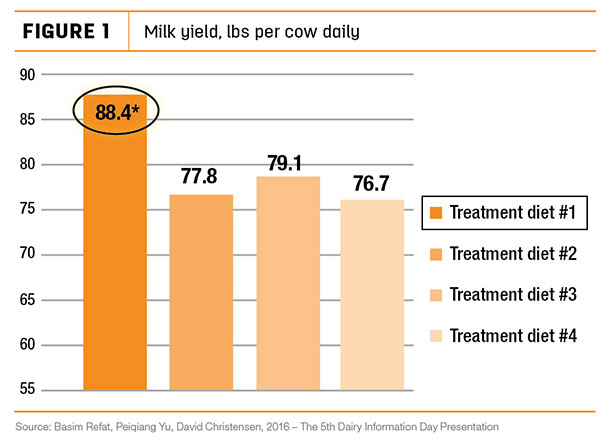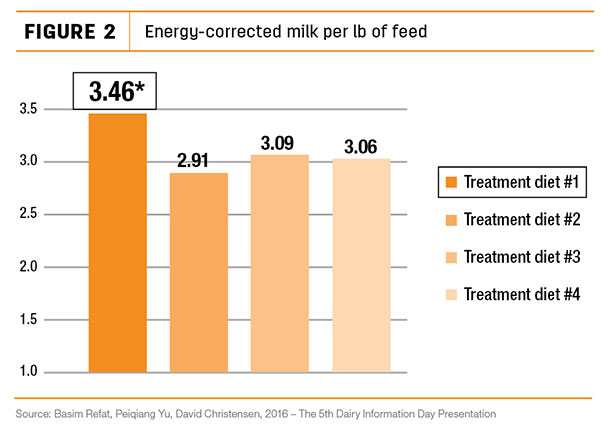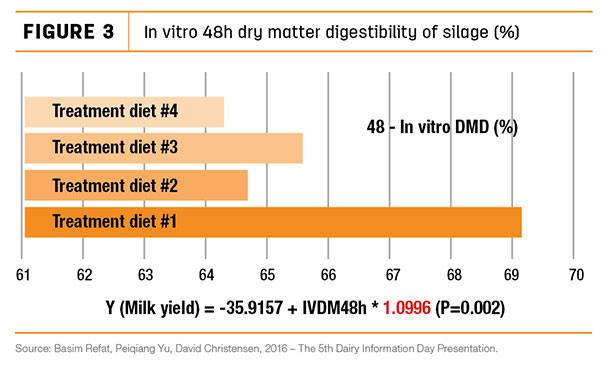Recently, researchers at the department of animal and poultry science, University of the Saskatchewan, have completed a dairy milk production trial. This research is part of Saskatchewan Ministry of Agriculture’s strategic R&D programs.
This research aimed to evaluate the effect of high in vitro neutral detergent fiber digestibility of three barley silage varieties on dry matter intake, milk production and chewing activity of high-yielding dairy cows.
In this study, four early lactating multiparous Holstein cows (bodyweight: 1,609 pounds, days on milk = 101, cow parities = 2.75) were randomly selected and assigned to one of the following four dietary treatments:
- Treatment diet one – The forage was whole-plant corn silage (P7213R). The corn variety was the best variety that was selected based on findings from a previous forage corn variety study.
- Treatment diet two – The forage was whole-plant CDC Cowboy barley silage.
- Treatment diet three – The forage was whole-plant CDC Copeland barley silage.
- Treatment diet four – The forage was whole-plant Xena barley silage.

The dairy trial was carried out at the Rayner Dairy Teaching and Research Facility, University of Saskatchewan, in collaboration with researchers and SaskMilk industry.
One Ph.D. student, Basim Refat with an M.Sc. from Spain, is involved in this project and carried out this dairy production trial and a number of other rumen fermentation studies.
The in vitro fiber digestibility of CDC Cowboy barley silage, CDC Copeland barley silage and Xena barley silage was 32, 28.4 and 26.3 percent, respectively.
The cow diets contained 41 percent dry matter from one of four silages, 10.3 percent alfalfa hay and 48.7 percent concentrate. Diets were formulated based on lactating dairy cow requirements using NDS software based on CNCPS 6.0.

Cows consuming treatment diet two with the highest in vitro neutral detergent fiber digestibility did not show different lactation performance, feed efficiency and chewing activity.
However, results showed the cows that consumed the treatment with corn silage utilized the feed more efficiently compared with those that consumed the barley silages. Cows consuming treatment diet one produced more milk than those that consumed barley silages, 88.49 versus 77.86 pounds per day.
Implications
This dairy performance trial implies that higher in vitro neutral detergent fiber digestibility of barley silage might not correspond with significantly greater dairy cow performance. However, feeding the corn silage had potential to produce more milk with greater feed efficiency compared with the barley silages.

A laboratory method (48-hour dry matter degradability) was used to predict milk yield. The result gave us a very interesting finding: For every one-unit increase in in vitro dry matter degradability, 2.4 pounds milk yield will be increased for each lactating dairy cow.
Therefore, in the future, barley silage with higher in vitro fiber or dry matter digestibility should be selected by barley breeders as one of the main breeding targets.
An upcoming dairy study on cow lactation performance trials feeding silage with much greater in vitro fiber or dry matter digestibility is planned. Feed additives will be evaluated for improvement in cow performance through increased fiber and TMR digestibility. ![]()
Peiqiang Yu, Basim Refat and David A. Christensen are with the University of Saskatchewan, College of Agriculture and Bioresources, Department of Animal and Poultry Science.





